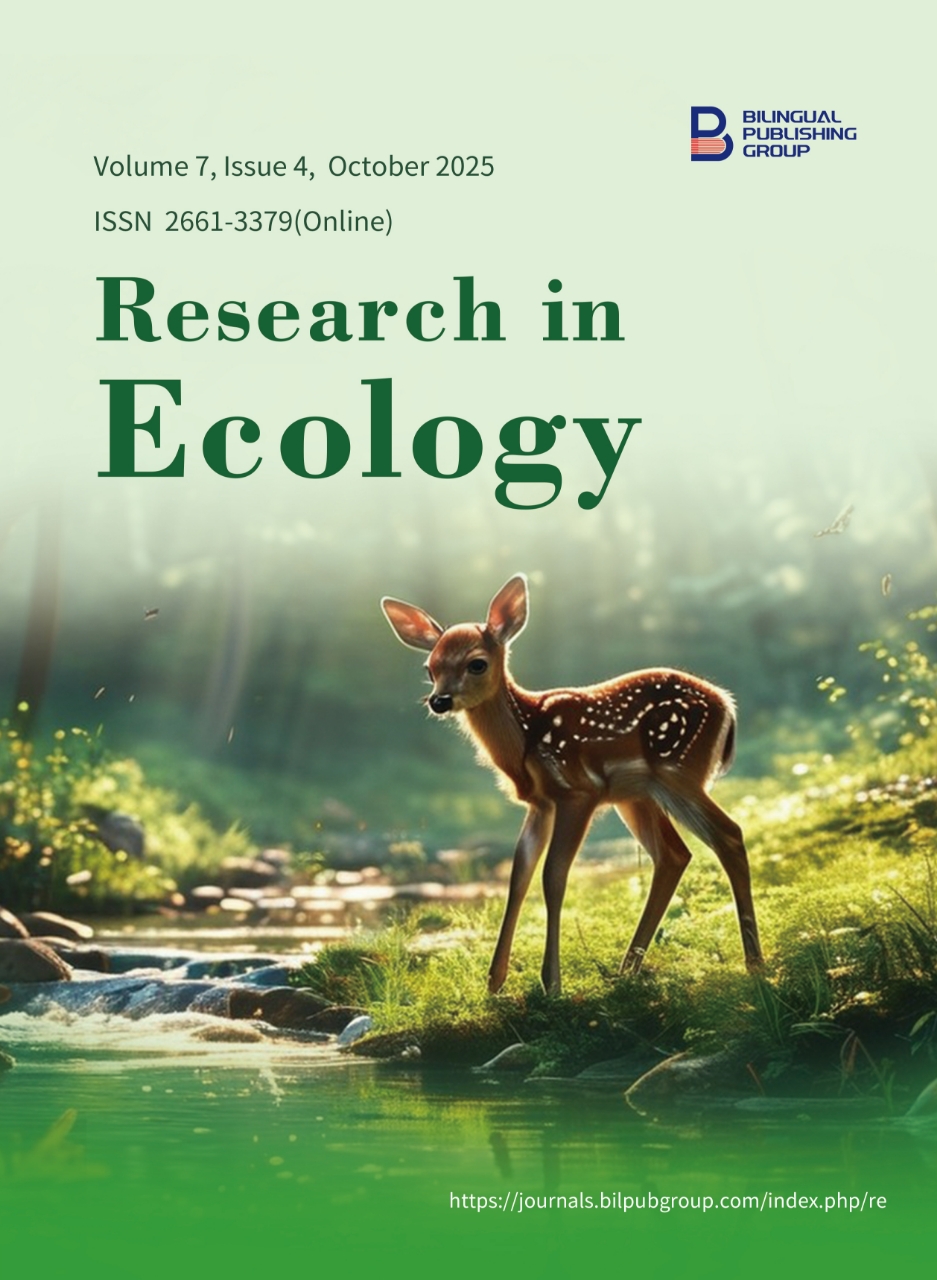
Assessment of the Tourism Potential of the Mountain Ecosystems of Kyrgyzstan
DOI:
https://doi.org/10.30564/re.v7i4.10052Abstract
The relevance of the work lies in its relation to the sustainability of mountain ecosystems of Kyrgyzstan in the context of growing tourist activity. The study area belongs to mountain ecosystems, which are highly sensitive to anthropogenic loads, and with the increase in this impact, the main tourism resources can be lost. The main objective of the work is to create a scientific basis for sustainable development of the studied region with minimal impact on the natural environment. The sustainability of the underlying surface was analyzed considering altitude, orography, climatic and seasonal changes, terrain slope, and other factors. Dominant plant species characteristic of different altitudinal levels were taken into account. An assessment of the level of degradation of the studied ecosystems was provided, based on field methods, by creating “transects,” which allow the identification of different levels of sustainability under anthropogenic influences. Based on the degree of degradation, the sites were ranked into six degrees of degradation. For this purpose, plant and soil samples were collected to assess the tourist load. To determine the potential for the development of tourist flows, their one-time throughput capacity was calculated, based on the total number in a specific area. Measures were proposed to regulate the flow of vacationers throughout the mountainous region. For these purposes, the maximum number of tourists per daily flow was determined. A methodology was developed for assessing mountain tourist zones, which is important for further regulation of the flow of vacationers, and will allow for the sustainable development of these zones in the future.
Keywords:
Ecosystem; Sustainability; Mountain; Potential; Anthropogenic Factor; Tourist Flow; Terrain Slope; ClimateReferences
[1] Food and Agriculture Organization of the United Nations (FAO), 2022. Leveraging automation in agriculture for transforming agrifood systems. FAO: Rome, Italy. Available from: https://openknowledge.fao.org/server/api/core/bitstreams/6fa56152-c232-4bc6-8eee-7d413261ad64/content
[2] Karimov, B., Dursunbaeva, A., Babekov, A., et al., 2024. Analysis of the medicinal flora of the Kurshab River basin in Eastern Alay to preserve biodiversity. E3S Web of Conferences. 537, 05009. DOI: https://doi.org/10.1051/e3sconf/202453705009
[3] Food and Agriculture Organization of the United Nations (FAO). Regional Technical Platform on Green Agriculture. Available from: https://www.fao.org/platforms/green-agriculture/areas-of-work/natural-resources-biodiversity-green-production/forestry/forest-and-landscape-restoration/en (cited 11 March 2025).
[4] Ministry of Natural Resources, Ecology and Technical Supervision of the Kyrgyz Republic, 2022. National Report on the State of the Environment in the Kyrgyz Republic. MNREiTN KR: Bishkek, Kyrgyzstan.
[5] Japarov, A.A., Turgunaliev, S.K., 2020. Sustainable management of forest resources in Kyrgyzstan: challenges and prospects. Bulletin of the Kyrgyz National Agrarian University. 2, 45–52.
[6] Mountain ecosystems and biodiversity: Kyrgyzstan’s contributions to the global mountain agenda. Available from: https://mnr.gov.kg/assets/files/froala/e375aff96e8c3ebbdaf9c22dc2ea9fc251fbecb4.pdf (cited 21 March 2025).
[7] State Agency for Environmental Protection and Forestry under the Cabinet of Ministers of the Kyrgyz Republic, 2023. National Forest Cadastre of the Kyrgyz Republic. State Agency for Environmental Protection and Forestry under the Cabinet of Ministers of the Kyrgyz Republic: Bishkek, Kyrgyzstan.
[8] Border Service of the State Committee for National Security of the Kyrgyz Republic, 2024. Statistics of visits to the republic. Border Service of the State Committee for National Security of the Kyrgyz Republic: Bishkek, Kyrgyzstan.
[9] For.kg, 2023. Tourist activity by regions of Kyrgyzstan. Available from: https://www.for.kg/news-844746-ru.html (cited 28 March 2025).
[10] Word of Kyrgyzstan, 2023. Main countries of origin of tourists. Word of Kyrgyzstan: Bishkek, Kyrgyzstan.
[11] Burkov, A.V., 2010. Ecological Aspects of Recreational Use of Natural Resources. Nauka Publishing House: Moscow, Russia.
[12] Gorbunov, A.N., Kuznetsov, V.I., 2015. Recreational Geography: Theory and Practice. Geo Publishing House: St. Petersburg, Russia.
[13] Zakharov, V.I., Sidorenko, A.P., 2018. Sustainable Development of Recreational Areas. Ural University: Ekaterinburg, Russia.
[14] Samatova, A.A., Stamaliev, K.Y., Seitburkhanov, A.G., et al., 2021. The problem of preservation of unique biodiversity of Sarkent as a source of green tourism. In: Shakirova, O.G., Bashkov, O.V., Khusainov, A.A. (eds.). Current Problems and Ways of Industry Development: Equipment and Technologies. Springer: Cham, Switzerland. pp. 726–734. DOI: https://doi.org/10.1007/978-3-030-69421-0_78
[15] Kalinina, N.V., Lebedev, A.S., 2017. Methods for assessing the recreational capacity of natural areas. Ecology and Life. 12(3), 45–50.
[16] Maslov, A.P., Fedorov, I.V., 2016. Geoinformation Technologies in Recreational Resource Management. Geo Publishing House: Moscow, Russia.
[17] Toktoraliev, E.T., Beyshenkulova, D.A., Abylmeyizova, B.U., et al., 2025. Trends in the tourism sector of Kyrgyzstan and problems of nature conservation in its mid-mountain zone. Annals of Environmental Science and Toxicology. 9(1), 001–005. Available from: https://dx.doi.org/10.17352/aest.000083
[18] Petrova, E.A., Soloviev, D.N., 2019. Economics of Tourism and Recreation. Finance and Statistics Publishing House: Moscow, Russia.
[19] Semenov, I.G., Tikhomirov, A.V., 2020. Recreational resources and their use in mountainous areas. Journal of Mining Sciences. 15(2), 78–85.
[20] Shevchenko, O.V., Kovalenko, T.Y., 2021. Assessing the impact of tourism on mountain ecosystems. Ecological Journal. 10(4), 112–119.
[21] Dyukova, L.A., Serikov, M.T., 2012. Determination of recreational capacity and actual use of park areas of the health resort complex "Forossky" (Ukraine). Modern Problems of Science and Education. No. 2. Available from: https://science-education.ru/ru/article/view?id=5973 (cited 15 April 2025).
Downloads
How to Cite
Issue
Article Type
License
Copyright © 2025 Erkin Toktoraliev, Bolotbek Karimov, Asel Turusbekova, Nazgul Murat kyzy, Kutmanaly Stamaliev, Akmat Begmatov, Aigul Dosnazarova, Usan Atabekov

This is an open access article under the Creative Commons Attribution-NonCommercial 4.0 International (CC BY-NC 4.0) License.




 Erkin Toktoraliev
Erkin Toktoraliev






